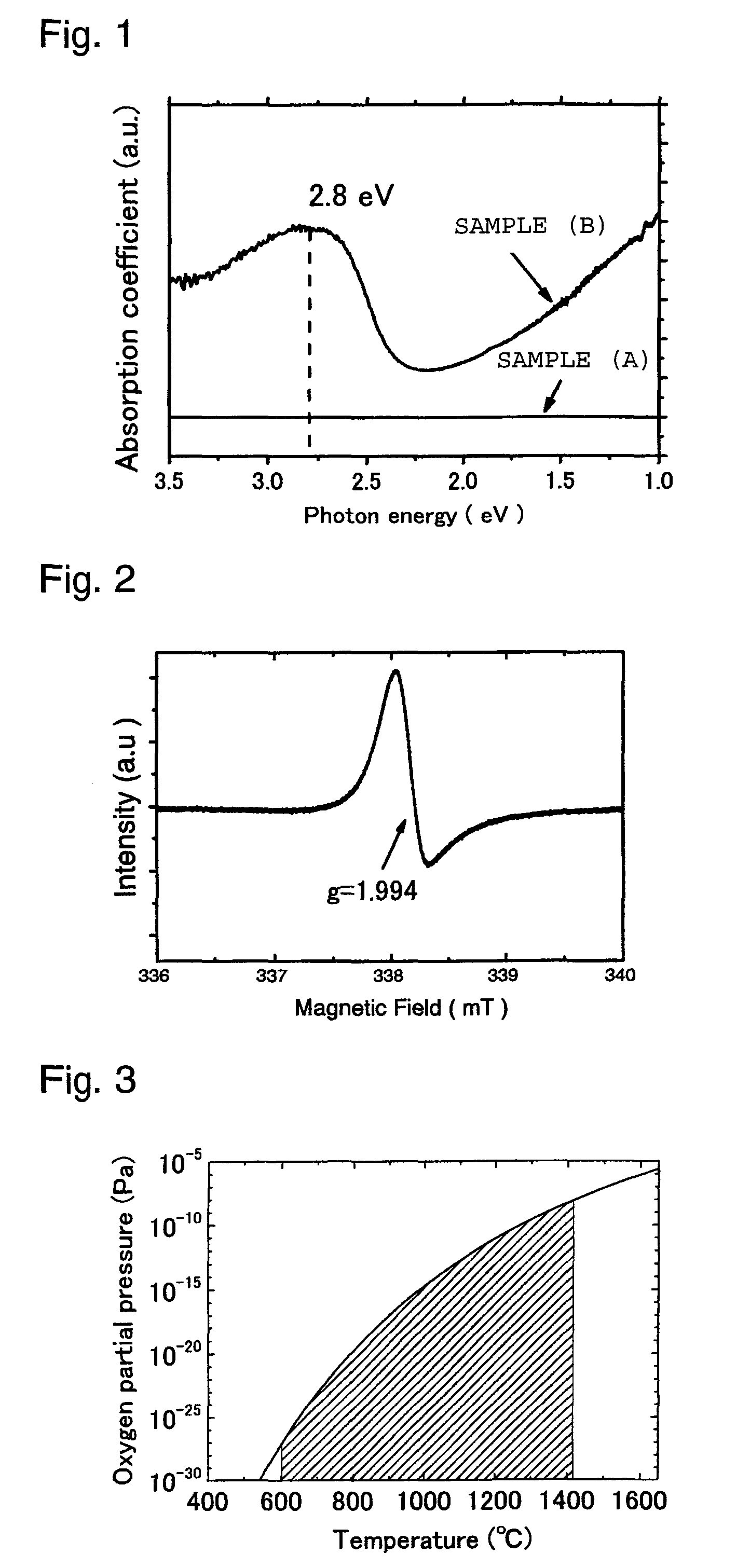Method for preparing electroconductive mayenite type compound
a technology of mayenite and compound, which is applied in the direction of chromium compounds, crystal growth processes, silicates, etc., can solve the problems of complex reaction conditions, high cost, and reaction, and achieve low cost, good yield, and good electroconductivity
- Summary
- Abstract
- Description
- Claims
- Application Information
AI Technical Summary
Benefits of technology
Problems solved by technology
Method used
Image
Examples
example 1
[0063]Calcium carbonate and aluminum oxide were blended so that a molar ratio of CaO:Al2O3 became 12:7 as calculated as oxides; the mixture was held at 1,300° C. in atmospheric air for 6 hours, and then cooled to room temperature; the resulting sintered product was pulverized to obtain a powder in a particle size of 50 μm. The resulting powder (hereinafter referred to as “powder A”) was a white insulator and found to be a C12A7 compound with the mayenite type structure by X-ray diffraction.
[0064]The powder A was placed in a covered carbon container and heat treatment was carried out in such a manner that the container was heated to the temperature of 1,300° C. and held for two hours in a nitrogen flow furnace with a nitrogen gas atmosphere having an oxygen concentration of 10 ppm by volume. The atmosphere in the container during the heat treatment had an oxygen partial pressure PO2 of 10−12 Pa by virtue of absorption of oxygen by carbon of the container, which satisfies the relation...
examples 2 to 4
[0066]The crystal powder sample (A) was subjected to heat treatment in an atmosphere maintained at a low oxygen partial pressure by absorption of oxygen by carbon, in the same manner as in Example 1 except that the heat treatment temperature was changed to 1,000° C., 1,100° C. or 1,200° C., thereby obtaining each of heat-treated products of Examples 2 to 4. The oxygen partial pressures PO2 during the heat treatment in Example 2 and in Example 3 were 10−14 Pa and 10−13.5 Pa, respectively, which did not satisfy the relation of Formula (1). In Example 4, it was 10−13 Pa, which satisfied the relation of Formula (1).
[0067]It was confirmed by X-ray diffraction that all the samples thus obtained had the peak of the mayenite type structure. The samples subjected to the heat treatment at 1,000° C. and 1,100° C. were white and insulating with their carrier densities of 1.4×1017 / cm3 and 8.7×1017 / cm3, respectively. The sample subjected to the heat treatment at 1,200° C. showed light green color...
example 5
[0068]The powder A was press-molded to obtain a molded product in depth×width×height of about 2 cm×2 cm×1 cm and the product was placed together with an aluminum metal in a covered alumina container. Heat treatment was carried out in such a manner that the container was heated to the temperature of 1,300° C. and held for 10 hours, in a vacuum furnace vacuumized by a rotary pump. In the container during the heat treatment, the oxygen partial pressure was as low as 10−21 Pa due to absorption of oxygen by aluminum placed together with the molded product in the container, and was the atmosphere under the condition satisfying Formula (1).
[0069]The heat-treated product thus obtained (crystal powder sample (C)) showed brownish black color and it was confirmed by X-ray diffraction measurement that it had the peak inherent to the mayenite type structure. Furthermore, it was found from the photoabsorption spectrum that the electron density was 1.4×1021 / cm3 and the electrical conductivity was ...
PUM
| Property | Measurement | Unit |
|---|---|---|
| temperature | aaaaa | aaaaa |
| temperature | aaaaa | aaaaa |
| temperature | aaaaa | aaaaa |
Abstract
Description
Claims
Application Information
 Login to View More
Login to View More - R&D
- Intellectual Property
- Life Sciences
- Materials
- Tech Scout
- Unparalleled Data Quality
- Higher Quality Content
- 60% Fewer Hallucinations
Browse by: Latest US Patents, China's latest patents, Technical Efficacy Thesaurus, Application Domain, Technology Topic, Popular Technical Reports.
© 2025 PatSnap. All rights reserved.Legal|Privacy policy|Modern Slavery Act Transparency Statement|Sitemap|About US| Contact US: help@patsnap.com

